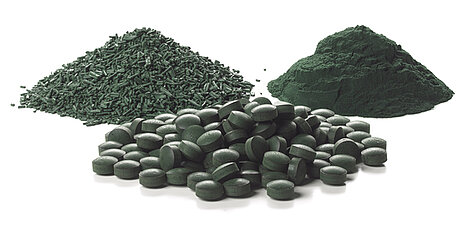Schizochytrium

You may have heard that omega-3 fatty acids are important for your dog's health. They support the cardiovascular system, the immune system, brain development and skin and coat health. But where do these fatty acids come from and how can you supply them to your dog?
What are omega-3 fatty acids?
Omega-3 fatty acids are a group of polyunsaturated fatty acids that the body cannot produce itself. They must therefore be obtained from food. The most important omega-3 fatty acids are docosahexaenoic acid (DHA), docasapentaenoic acid (DPA) and eicosapentaenoic acid (EPA). These fatty acids have various functions in the body, for example:
- They are components of cell membranes and influence the fluidity and permeability of cells.
- They are precursors of anti-inflammatory and blood-thinning substances that protect the cardiovascular system.
- They are involved in the formation of nerve cells and neurotransmitters, which are important for brain development and function.
- They promote skin and coat health by increasing the skin's moisture and elasticity and reducing inflammation.
Where do omega-3 fatty acids come from?
Most omega-3 fatty acids come from marine sources, such as fish oil or krill oil. These contain DHA and EPA in a form that can be directly utilized by the body. However, there are some disadvantages to using marine sources:
- Fish stocks are threatened by overfishing and the quality of fish oil can be affected by pollutants such as heavy metals or dioxins.
- The fish oil may have an unpleasant odor or taste that some dogs dislike.
- Fish oil can oxidize quickly and become rancid if not stored properly.
An alternative source of omega-3 fatty acids is Schizochytrium, a microalgae that is cultivated in special containers. This algae has a high content of DHA and EPA, which can also be directly absorbed by the body. The benefits of Schizochytrium are:
- The algae is a sustainable source of omega-3 fatty acids that does not pollute the marine ecosystem.
- The algae is free from harmful substances such as heavy metals or dioxins, as it grows under controlled conditions.
- The algae has a neutral taste and smell that is accepted by most dogs.
- The algae is stable in storage and resistant to oxidation as it contains a natural antioxidant.
How can you feed your dog Schizochytrium?
There are various products on the market that offer Schizochytrium as a food supplement for dogs. These can be administered as an oil or as a powder. The dosage depends on your dog's weight and requirements. You should always follow the manufacturer's instructions and ask your vet for advice before giving your dog a new product.
An example of a product containing Schizochytrium is algoBarf, a powder made from marine microalgae that is rich in omega-3 fatty acids. It can be mixed into the feed or administered directly orally. Another example is O-max, an oil from algae that also contains high concentrations of DHA and EPA. Its taste has been optimized and it can be given orally with a dosing syringe or mixed into the feed. Another example is napfcheck algae oil capsules, which contain algae oil in a cellulose capsule. They can be fed whole or sliced.
Schizochytrium is a plant-based source of omega-3 fatty acids, which are important for your dog's health. It has several advantages over marine sources, such as sustainability, purity, acceptability and stability. You can give your dog Schizochytrium as a food supplement in the form of oil, powder or capsules.
If you notice any signs of hypersensitivity or poisoning in your dog, you should see your vet immediately. We are not a substitute for a vet, but we try to be as accurate as possible. Every dog reacts differently and we recommend you get a second opinion or consult your vet if in doubt.
Stay healthy and take good care of your four-legged friend!😊